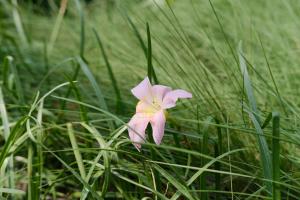Introduction:
Ice plant (Carpobrotus edulis) is a popular ground cover plant that is native to South Africa. It has spread rapidly across the world due to its low maintenance requirements and ability to grow in poor soil conditions. In this article, we will explore how fast ice plant can spread and examine some of the factors that contribute to its invasive potential.
Factors that contribute to the spread of ice plant:
There are several factors that contribute to the spread of ice plant. One of the key factors is its ability to produce large quantities of seeds. The seeds are dispersed by wind, water, and animals. The seeds can also survive for long periods of time in the soil, allowing ice plant to quickly colonize disturbed areas.
Another factor that contributes to the spread of ice plant is its ability to root easily from stem cuttings. This allows the plant to quickly form dense mats, outcompeting native vegetation for resources.
Finally, ice plant is resistant to drought and can survive in a wide range of soil types. This makes it well suited to colonizing disturbed areas such as roadsides, construction sites, and other areas where soil conditions may be poor.
The speed at which ice plant can spread:
Ice plant can spread very rapidly, with individual plants able to cover several square meters of ground in a single growing season. In addition, ice plant is able to form dense mats that can choke out native vegetation, further contributing to its spread.
Ice plant is also able to spread over long distances when its seeds are carried by wind or water. This allows it to colonize new areas far from its original location.
Finally, ice plant is able to rapidly fill in gaps in disturbed areas, further contributing to its rapid spread. This ability to colonize disturbed areas means that ice plant can quickly establish itself in new locations and spread rapidly.
Controlling the spread of ice plant:
Controlling the spread of ice plant can be challenging. One effective method is to manually remove the plant and its roots, being careful to bag and dispose of the plant to prevent further spread.
Another method is to use herbicides to kill the plant. It is important to use herbicides that are specifically labeled for use on ice plant, as using the wrong type of herbicide can be ineffective or even cause harm to other species in the area.
Finally, prevention is key to controlling the spread of ice plant. Avoid using ice plant in landscaping projects, and be careful when traveling to areas where ice plant is present to avoid spreading seeds to new locations.
Conclusion:
In conclusion, ice plant is a highly invasive species that can spread rapidly and outcompete native vegetation for resources. Its ability to produce large quantities of seeds and root easily from stem cuttings, as well as its resistance to drought and ability to survive in a wide range of soil types, all contribute to its invasive potential. Effective management strategies, such as manual removal and targeted herbicide applications, as well as prevention measures, such as avoiding the use of ice plant in landscaping projects, are essential for controlling its spread and preserving the ecological integrity of affected areas.

 how many times do yo...
how many times do yo... how many planted tre...
how many planted tre... how many pine trees ...
how many pine trees ... how many pecan trees...
how many pecan trees... how many plants comp...
how many plants comp... how many plants can ...
how many plants can ... how many plants and ...
how many plants and ... how many pepper plan...
how many pepper plan...































